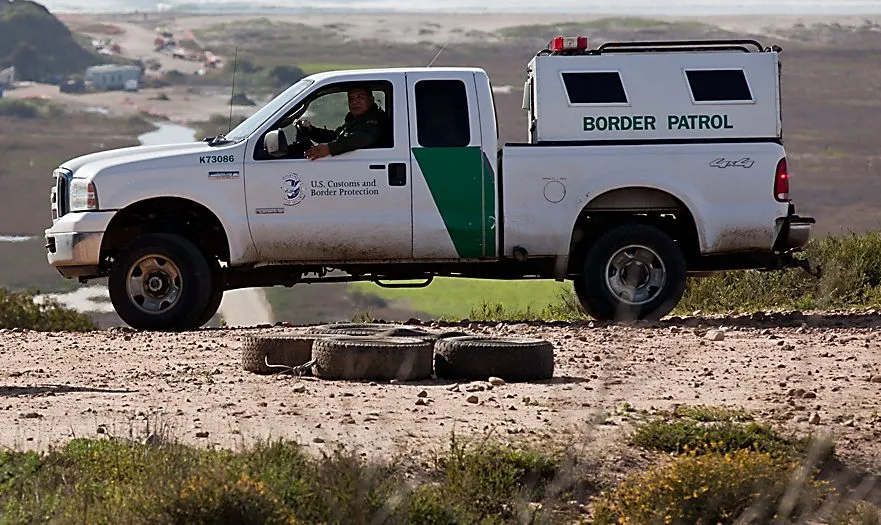What did Title 42 do, anyway? A look at US immigration policies and how they’re changing

by COLLEEN LONG Associated Press
The U.S. is putting new restrictions into place at its southern border to try to to stop migrants from crossing illegally and encourage them instead to apply for asylum online through a new process.
The new rules come with the end of coronavirus restrictions on asylum that have allowed the U.S. to quickly expel migrants at the U.S.-Mexico border for the last three years. Those restrictions have often been referred to as Title 42, because the authority comes from Title 42 of a 1944 public health law that allows curbs on migration in the name of protecting public health.
Congress has passed no immigration reform in decades.
Disinformation is swirling and confusion is setting in during the transition. A look at the new rules (and the old ones):
WHAT IS TITLE 42 AND WHAT DID IT DO?
Title 42 is the name of an emergency health authority. It’s a holdover from the Trump administration and it began in March 2020. The authority allowed U.S. officials to turn away migrants who came to the U.S.-Mexico border on the grounds of preventing the spread of COVID-19.
Before that, migrants could cross illegally, ask for asylum and be allowed into the U.S.. They were then screened and often released to wait out their immigration cases.
Under Title 42, migrants were returned back over the border and denied the right to seek asylum. U.S. officials turned away migrants more than 2.8 million times. Families and children traveling alone were exempt.
But there were no real consequences, except to turn people around. So migrants were able to try again and again to cross the border illegally on the off chance that they would get into the U.S.
President Joe Biden initially kept Title 42 in place after he took office, then tried to end its use in 2022. Republicans sued, arguing that the restrictions were necessary border security. Courts had kept the rules in place. But the Biden administration announced in January that it was ending national COVID-19 emergencies.
The Biden administration has put into place a series of new policies that crack down on illegal crossings. The administration says it’s trying to stop people from paying smuggling operations to make a dangerous and often deadly journey.
This time, there are strict consequences. Migrants caught crossing illegally will not be allowed to return for five years. They can face criminal prosecution if they do.
NEW ASYLUM RULES
Under U.S. and international law, anyone who comes to the U.S. can ask for asylum. People from from all over the world come to the U.S-Mexico border to seek asylum in the U.S. They are screened to determine whether they have a credible fear of persecution in their homeland. Their case then goes to the immigration court system to determine if they can stay in the U.S.
The Biden administration is now turning away anyone seeking asylum who didn’t first seek protection in a country they traveled through, or first applied online. This is a version of a Trump administration policy that was overturned by the courts, so it’s not clear whether this restriction will hold up. A lawsuit is expected.
WHO’S ALLOWED IN?
The U.S. has said it will accept up to 30,000 per month from Venezuela, Haiti, Nicaragua and Cuba as long as they come by air, have a sponsor and apply online first. They will also allow up to 100,000 people from Guatemala, El Salvador, and Honduras into the U.S. who have family here if they, too, apply online. Border officials will deport people otherwise, including turning 30,000 a month from Venezuela, Haiti, Nicaragua and Cuba back over the border to Mexico.
WHAT ABOUT FAMILIES?
Families crossing the border illegally will be subject to curfews, and the head of household will have to wear an ankle monitoring bracelet. Immigration officials will try to determine within 30 days whether a family can stay in the U.S. or be deported. Usually that process would take years.
The administration considered detaining families until they cleared initial asylum screenings but opted instead for for the curfews, which will run from 11 p.m. to 5 a.m. and begin soon in Baltimore; Chicago; Newark, New Jersey; and Washington, D.C., according to a U.S. official who spoke on condition of anonymity because the information was not intended to be public. Families who do not show up for their screening interviews will be picked up by immigration authorities and deported.
OVERCROWDING
Border Patrol stations are meant to house migrants temporarily and don’t have capacity to hold the volume of people coming. Some stations are already too crowded. As a result, agents were told to begin releasing migrants into the U.S. with instructions to appear at an immigration office within 60 days.
Agents were also told to start the releases in any area where holding facilities were at 125% capacity or the average time in custody exceeded 60 hours. They were also to start releases if 7,000 migrants were taken into custody across the entire border in any one day.
That’s already happened. Some 10,000 people taken into custody on Tuesday. This could create problems for Biden administration officials trying to crack down on those coming in.
MIGRATION HUBS
U.S. officials plan to open 100 regional migration hubs across the Western Hemisphere. where people can come to seek placement in another country, including Canada and Spain.
There will be hubs in Colombia and Guatemala, but it’s not clear where the others will be. It’s also not clear when they will be up and running.








